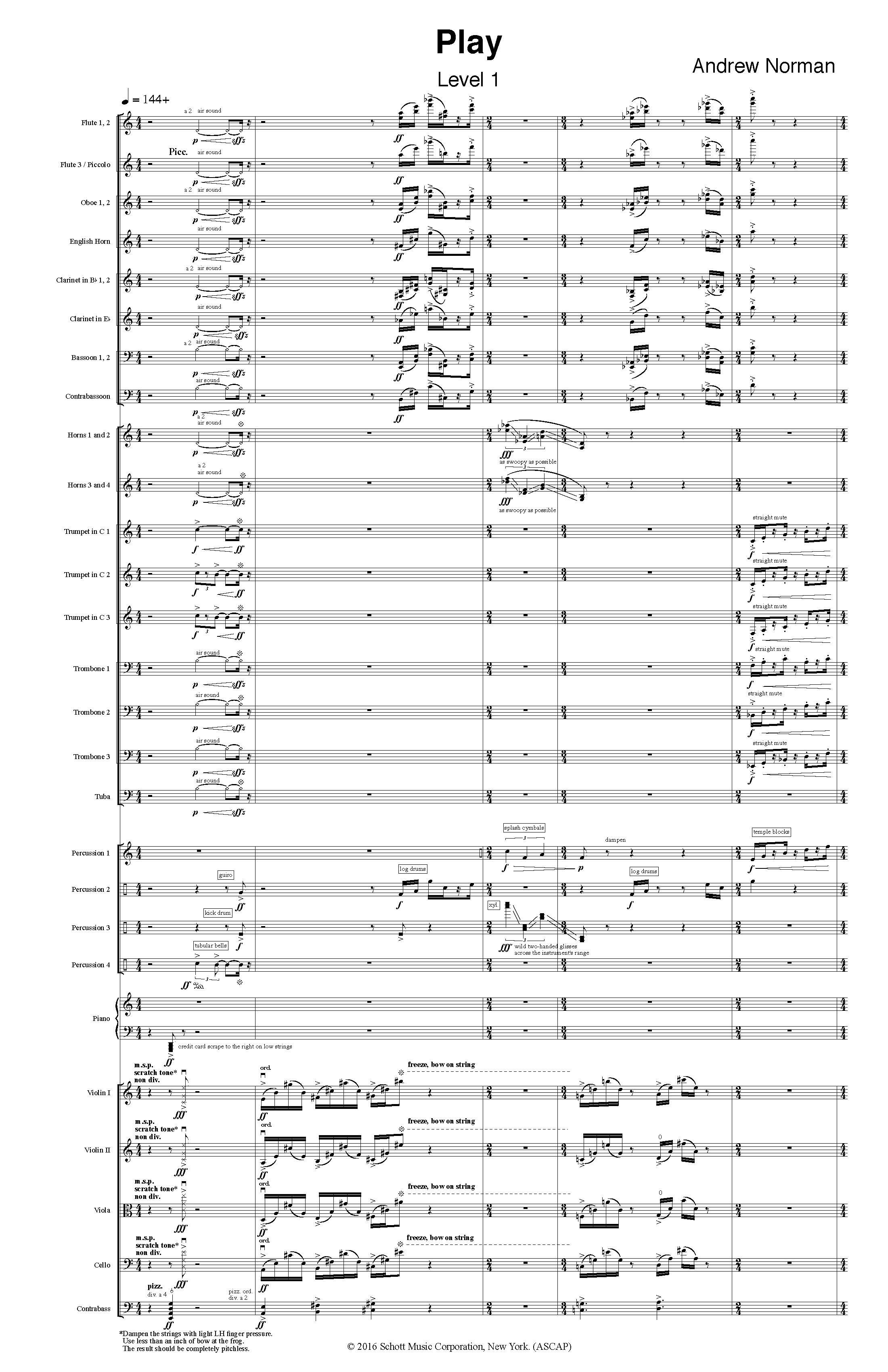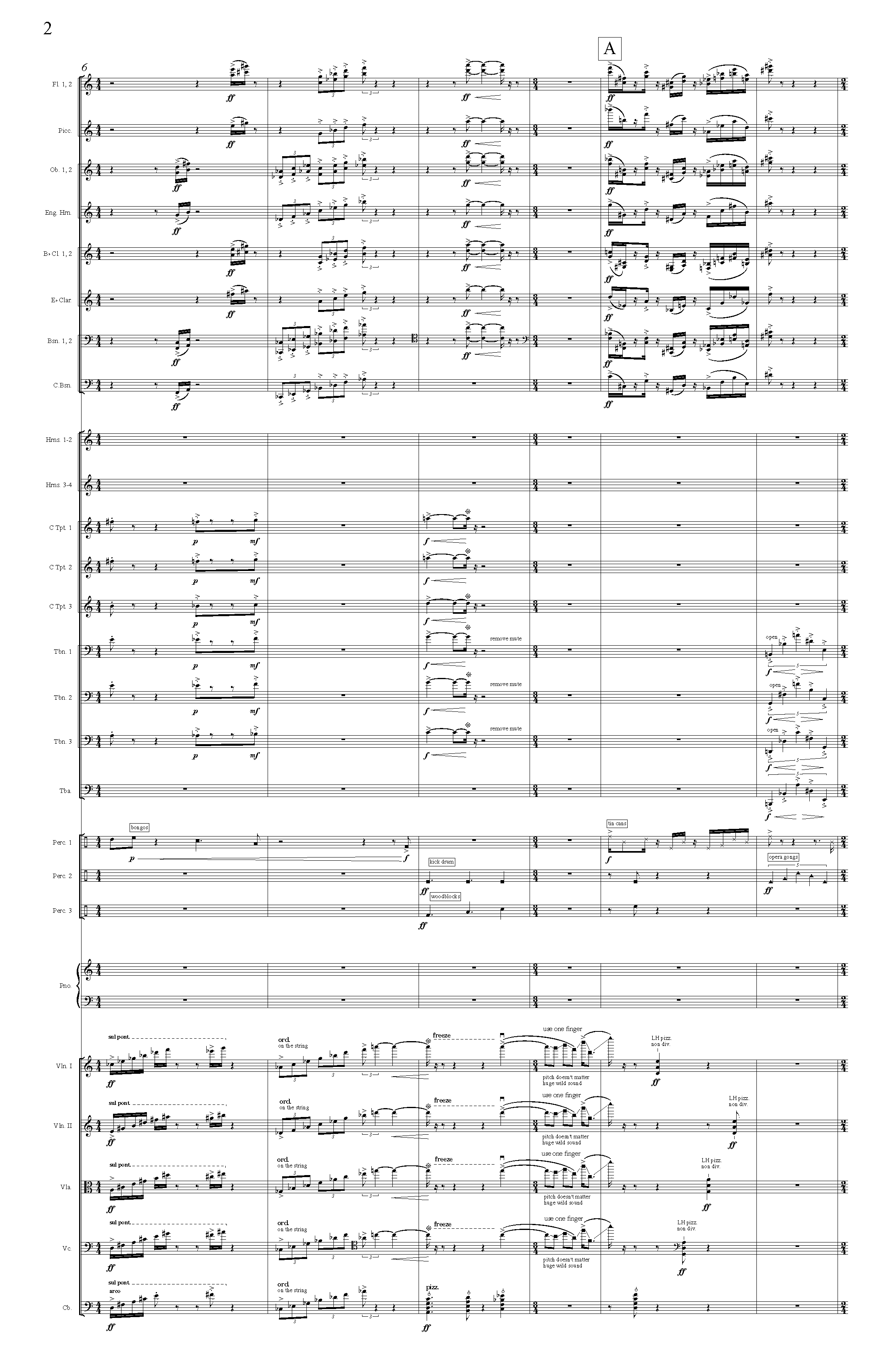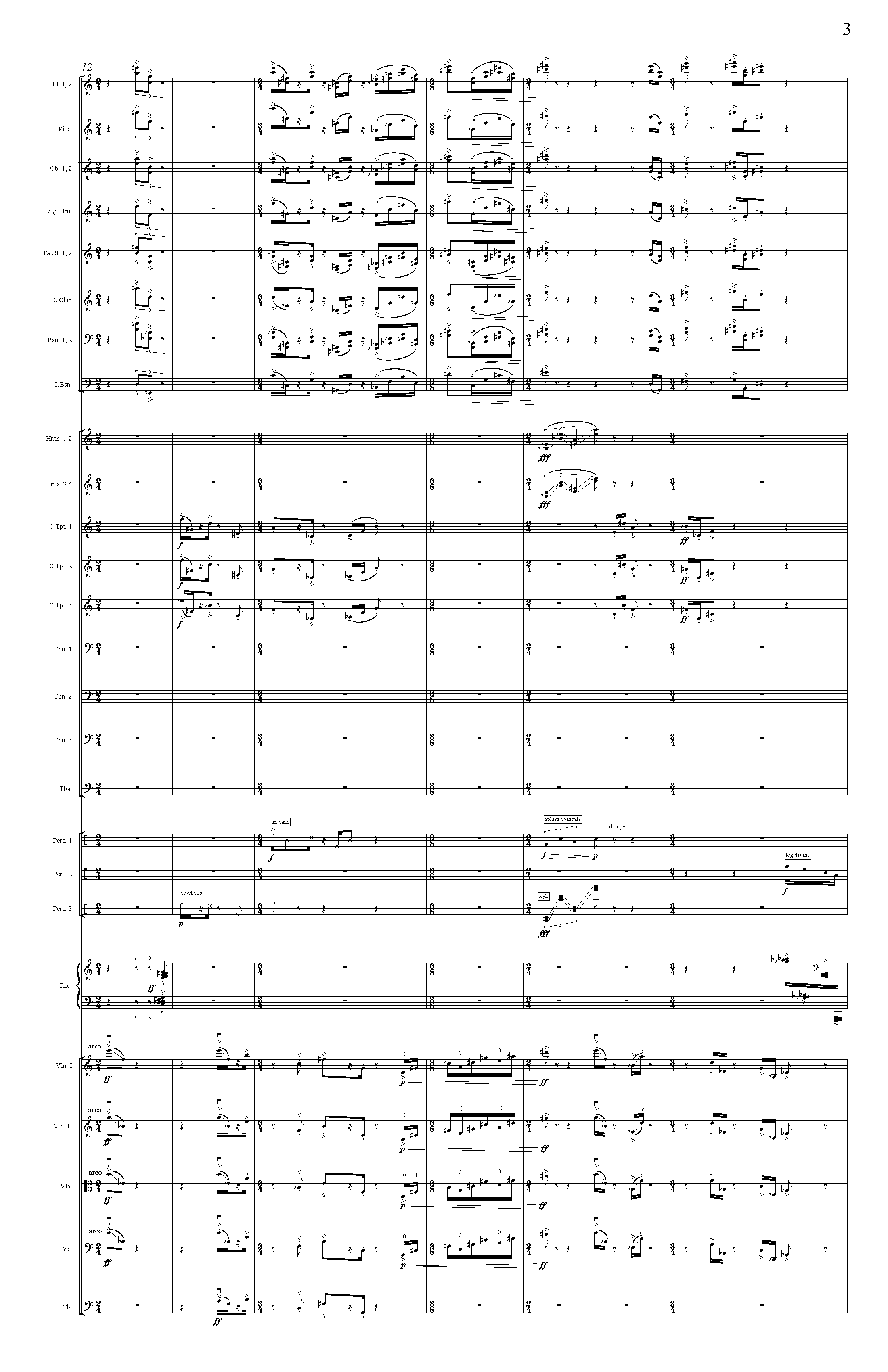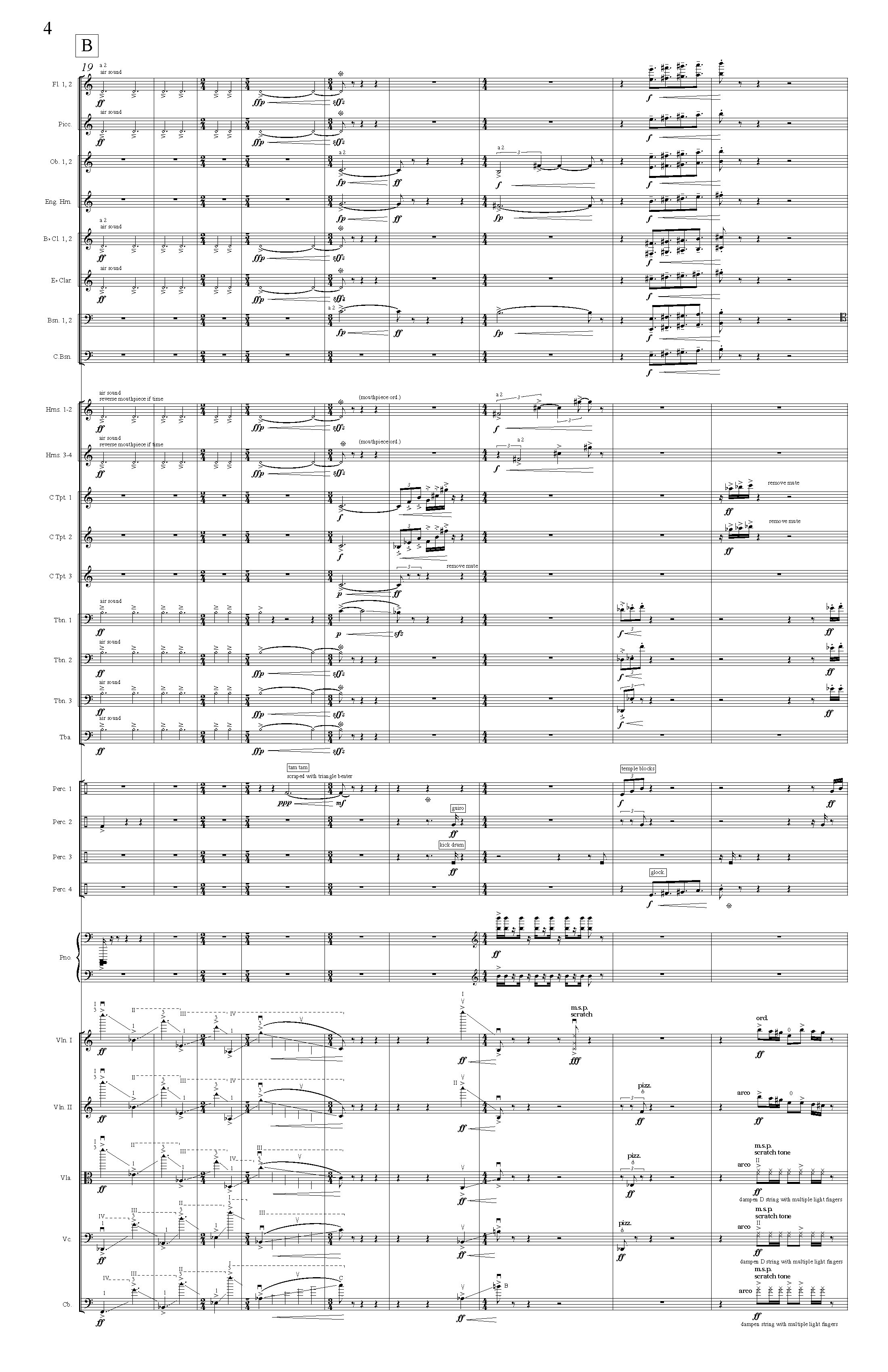Andrew Norman
Play
for orchestra
(2013; rev. 2016)| Awards | Grawemeyer Award for Music Composition (2017) |
|---|---|
| Duration | 47' |
| Movements | Level 1 Level 2 Level 3 |
| Commission | Commissioned by the Boston Modern Orchestra Project with funding from Music Alive, a national residency program of the League of American Orchestras and New Music USA. Revised version commissioned by the Los Angeles Philharmonic and premiered by that orchestra, under the direction of Gustavo Dudamel, on October 28th, 2016 at Walt Disney Concert Hall. |
| Premiere | May 17, 2013; Jordan Hall, Boston, MA; Boston Modern Orchestra Project • Gil Rose, conductor Revision premiere: October 28, 2016; Walt Disney Concert Hall, Los Angeles, CA; Los Angeles Philharmonic • Gustavo Dudamel, conductor |
| Instrumentation | 3(2.,3.pic).2.ca.3(3.ebcl).3(3.cbsn)-4.3.2.tbtn.1-4perc(I. vib [with bow], 4bng, 5tempbl, 3 splash cym, 5 tin cans, brake d, kick d, washboard [possibly shared with perc 3], tam-t, slapstick [very large]; II. crot [with bow], 5 log d, 4 opera gongs, 4 sm tom-t, spring coil, tri, guiro, tub bells [shared with perc 4]; III. xylo, 4wdbl, 5 cow bells, kick d, ratchet, washboard [possibly shared with perc 1], slapstick [very large], b.d [shared with perc 4], glsp [shared with perc 4]; IV. vib [with bow], 4 sus cym, glsp [shared with perc 3], b.d, sand paper blocks, b.d [shared with perc 3], tub bells [shared with perc 2])-pno-str(16.14.12.10.8) |
| Publisher | Schott Music |
| Rental | Performance materials are available for order: |
Media
Program Note
Levels 1 and 3 can be performed separately.
I am fascinated by how instruments are played, and how the physical act of playing an instrument becomes potent theatrical material when we foreground it on stage at an orchestra concert. I'm also fascinated by how the orchestra, as a meta-instrument, is played, how its many moving parts and people can play with or against or apart from one another. While the world "play" certainly connotes fun and whimsy and a child-like exuberance, it can also hint at a darker side of interpersonal relationships, at manipulation, control, deceit, and the many forms of master-to-puppet dynamics one could possibly extrapolate from the composer-conductor-orchestra-audience chain of communication. Much of this piece is concerned with who is playing whom. The percussionists, for instance, spend a lot of their time and energy "playing" the rest of the orchestra (just as they themselves are "played" by the conductor, who in turn is "played" by the score). Specific percussion instruments act as triggers, turning on and off various players, making them (sometimes in a spirit of jest, sometimes not) play louder or softer, forwards or backwards, faster or slower. They cause the music to rewind and retry things, to jump back and forth in its own narrative structure, and to change channels entirely, all with an eye and ear toward finding a way out of the labyrinth and on to some higher level.
- Andrew Norman
 0 items in your cart
0 items in your cart
















